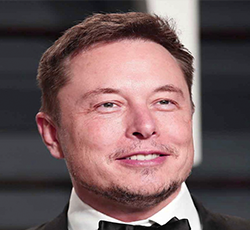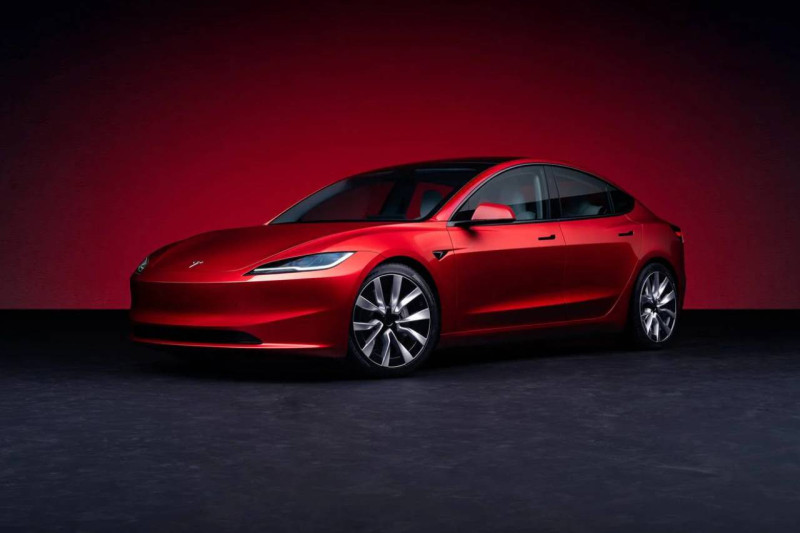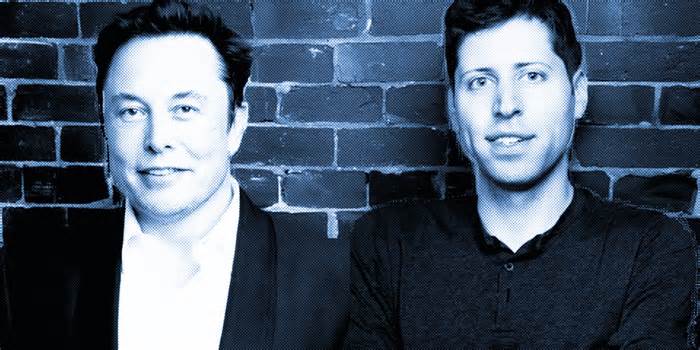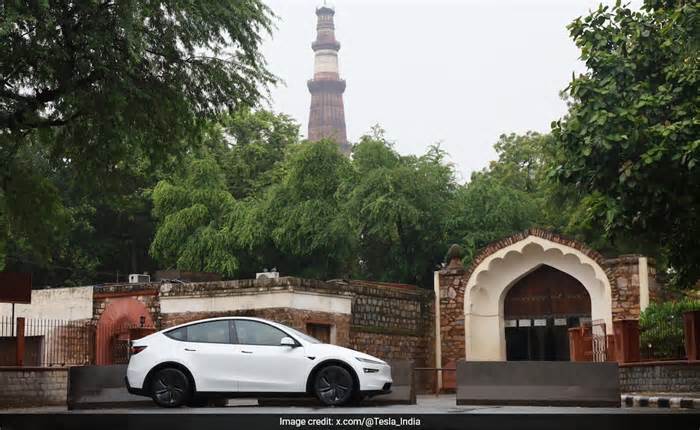
Meet Tesla's Model 3, Its Long-Awaited Car for the Masses
- by Wired
- Mar 31, 2016
- 0 Comments
- 0 Likes Flag 0 Of 5

The $35,000 Tesla
Model 3 is finally here. It is sleek, quick as hell, and meant for the masses. And it is the most important car the company will ever build.
The Model 3 is the car Tesla Motors has promised since the company's founding, the car that CEO Elon Musk is convinced will push EVs into the mainstream and the technology to an inflection point. Not to put too fine a point on it, it is the car Musk believes will change the world.
"It's very important to accelerate the transition to sustainable transport," Musk said on stage. "This is really important for the future of the world."
In person and on paper, the Model 3 is a stunner. It's a handsome sedan, with four doors and five seats, and all the comfort and practicality you'd expect of an upscale mid-size sedan. The battery is good for a 0 to 60 mph time under six seconds, a range of 215 miles. It's packed with tech, stylish, and a bargain if Tesla can deliver it at the $27,500 base price Musk promises you'll pay after the federal tax credit.
The specs and price are key, because so far Tesla Motors has aimed squarely at the affluent. The company's first three models---the innovative Roadster sports car, exquisite Model S sedan, and tech-slinging Model X SUV---made electric cars fun, cool, and compelling. The Model 3 is meant to do something greater: sell the masses on electric propulsion.
Tesla is hardly alone in hoping to do this and, frankly, got beaten in the race to build a $30K EV wth a triple-digit range by General Motors. In January, the Detroit stalwart introduced the 2017 Chevrolet Bolt, a battery electric hatchback with a range of 200 miles and a price of 30 grand after the $7,500 federal tax credit.
Still, Musk isnât the slightest bit worried and, to be fair, has little reason to be. The Bolt is lovely, but Tesla has a proven ability to get people excited, and there's no denying the company has a cachet many automakers do not. You don't often see people lining up outside dealerships simply to place a $1,000 deposit on a car they haven't even seen---something that happened at many Tesla stores this week. By the time Musk pulled the sheet off the Model 3 at the sprawling Space X campus here in Hawthorne, California, 115,000 customers had put their money down.
More Electric Driving The Master Plan
All of this has unfolded in accordance with the "master plan" Musk laid out in a 2006 blog post. "Almost any new technology initially has high unit cost before it can be optimized and this is no less true for electric cars," he wrote. "The strategy of Tesla is to enter at the high end of the market, where customers are prepared to pay a premium, and then drive down market as fast as possible to higher unit volume and lower prices with each successive model."
Thirteen years after Eberhard and Tarpenning founded the company, Tesla remains firmly entrenched in step one of that process. Its cars are wonderful, but have only gotten more expensive over time. When he announced the Model S in 2009, Musk said it would start at $57,400. Today the base price is $70,000 and the average sale price is $105,000, according to an estimate Morgan Stanley made in 2014, before the company added pricey---and popular---upgrades like autopilot and all-wheel drive. (Tesla will not reveal the average sale price of its cars.)
Nobody makes moneyâor not a lot of moneyâon the low-end brands.
Automotive Analyst Gary Silberg
Of course, there's a reason automakers love the luxury market---it's where the money is. "Nobody makes money---or not a lot of money---on the low-end brands," Silberg says. Hans-Werner Kaas, a senior partner at McKinsey, says luxury cars offer margins around eight to nine percent, double what you usually get from volume products.
Even with Porsche, Audi, and others jumping into the high-end EV market, thereâs no reason to think Tesla wouldn't hold its own in an increasingly crowded market. It could very easily continue selling 90,000 or so sedans and SUVs a year and keep everyone happy.
But that's not how you change the world. And Musk, more than anything, wants to change the world. It's true with Solar City, it's true with SpaceX, and it's absolutely true with Tesla Motors, a company with the stated mission of "accelerating the worldâs transition to sustainable transportation." You don't do that selling cars only to people in places like Palo Alto and Los Angeles and Scarsdale.
You do it selling cars to everyone.
A Fresh Face
The Model 3 is the car to do that. Autopilot features come standard, and Musk promises five-star safety ratings in all categories. Inside, the Model 3 feels just like the Model S and X---sleek and minimalist. The whole roof is glass, which makes any sunroof look like a peephole. And Tesla's trademark enormous center console screen---here 15 inches instead of the usual 17---has been flipped to sit horizontally.
"You will not be able to buy a better car for $35,000," Musk says. The first cars, produced in late 2017, will go to West Coast customers, with deliveries gradually moving east. Europe and Asia will follow, along with right-hand drive markets. Current Model S and X owners get priority. Tesla's history teaches us most customers will have to wait months, or years, to get their car. And it shows us that car is worth waiting for.
Growing Up by Driving Down
For all Musk's talk of disrupting the industry, Tesla Motors has been little more than a voluble pest. The company sold 50,580 cars last year. General Motors moves that many in a single weekend.
That explains how GM won the race to build the 200-mile, $30,000 electric car. It threw time and money and resources at a really hard problem---building an EV that delivers on those two metrics is no easy feat---and spent more than a decade solving it. And it relied upon the sprawling infrastructure and established supply chain that makes building and selling huge numbers of cars (relatively) easy.
And that is the world Tesla is entering with the Model 3. The fixed costs of the auto industry---the equipment, materials, labor, and so on---make for slim profit margins on a $35,000 car. âYou need to have your different types of cost and profit levels really tightly under control for making money in such a segment,â McKinseyâs Kaas says. And you have to drive volume. To get your return on upfront investments into equipment, Kaas says, âyou need scale.â
They have to make sure that they make a profit.
Kelley Blue Book Senior Analyst Rebecca Lindland
Tesla is slowly getting there, and investing $1.5 billion to do it. Battery production at the Gigafactory in Nevada should begin later this year. Things are ramping up at its automotive factory in Fremont, California, where GM and Toyota turned out half a million Vibes and Corollas and other models annually. Tesla wants to hit that number by 2020, which would make it as big as Dodge. And the company is expanding a retail network that already includes more than 200 stores in North America, Europe, China, and Japan. It's going to double the size of the Supercharger network.
The challenge is scaling up quickly enough to meet demand and make money. General Motors can afford to take a loss on the Bolt because more profitable models pad the bottom line. Tesla---which has never had a profitable year---doesn't necessarily have this luxury, especially if the 3 is to be its primary product. âThey have to make sure that they make a profit,â says Rebecca Lindland, a senior analyst at Kelley Blue Book.
Profitability means using many of the tricks everyone else uses. Sharing parts between models, buying in volume from suppliers, and finding the best prices on things like wire harnesses, insulation, vents, and the myriad other parts consumers never see. âThatâs where you need to save as much money as possible,â Lindland says.
It's an exceedingly tough game to play. Tesla has clearly done far better, and lasted far longer, than other upstarts (Tucker, Delorean, Fisker) that thought they could rewrite the rules. But an increasingly competitive market has killed far more established automakers. Remember Saab? How about Pontiac?
As if that weren't enough, there's another challenge to Teslaâs down-market move. The $7,500 federal tax credit that pushes the base price of the Model 3 below $30,000 wonât last forever. It only applies to the first 200,000 electric vehicles a manufacturer sells in the US. Tesla will be approaching that limit by the time the 3 hits the market late next year.
But there's some good news that will help Tesla.
The Good News
One of the biggest reasons EVs cost so much (compared to gas-powered cars) is the battery. The battery can account for one-third of the price of the car, which is why something like the Nissan Leaf or Fiat 500e costs about $30,000, while offering only about 100 miles of range. But those costs are falling, fast. Between 2010 and 2015, the average cost per kilowatt hour (kWh) dropped 65 percent, from $1,000 to $350, according to a recent report from Bloomberg New Energy Finance. âBy 2022,â the report says, âthe unsubsidized total cost of ownership of [battery electric vehicles] will fall below that of an internal combustion engine vehicle.â
Itâs also important to remember that the Model 3 is just the start of a new line of vehicles. Musk has said Tesla will use the carâs core structure as the basis for a series of vehicles, including a small crossover. Itâs a common industry move, a way to amortize the infrastructure costs over more vehicles. And taking preorders will help Tesla gauge how many cars it needs to build, avoiding the risk of producing more stock than it can sell.
Third, selling cars isnât Teslaâs only route to the bank. California is one of 10 states that require automakers to offer at least some zero emissions vehicles. Automakers can circumvent that mandate by buying âZEV creditsâ from automakers who find themselves with surplus credits. Tesla, which has a surplus of credits because it only sells electric cars, earned $51 million selling spare credits in the first quarter of 2015 alone. Those credits are slowly losing value under the complicated regulations governing them, but selling a lot more cars should make up for that.
Ultimately, though, Tesla has earned the benefit of the doubt. Musk has consistently made big promises, then proved the doubters and naysayers wrong, first with the Roadster, then with the S and the X. Bringing zero-emission motoring to the proletariat and radically remaking how people get around is Tesla's biggest promise, and Musk's greatest challenge, yet. But together they've made it this far. Musk doesn't always deliver on time or within budget, but he always delivers.
Alex Davies is a senior editor at Insider and the former editor of WIREDâs transportation section, where he specialized in covering autonomous and electric vehicles. He is also the author of Driven, a book chronicling the origin of and race to create the self-driving car. ... Read more
Senior Associate Editor
Please first to comment
Related Post
Stay Connected
Tweets by elonmuskTo get the latest tweets please make sure you are logged in on X on this browser.





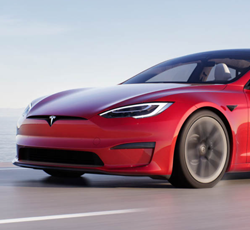
 Energy
Energy

